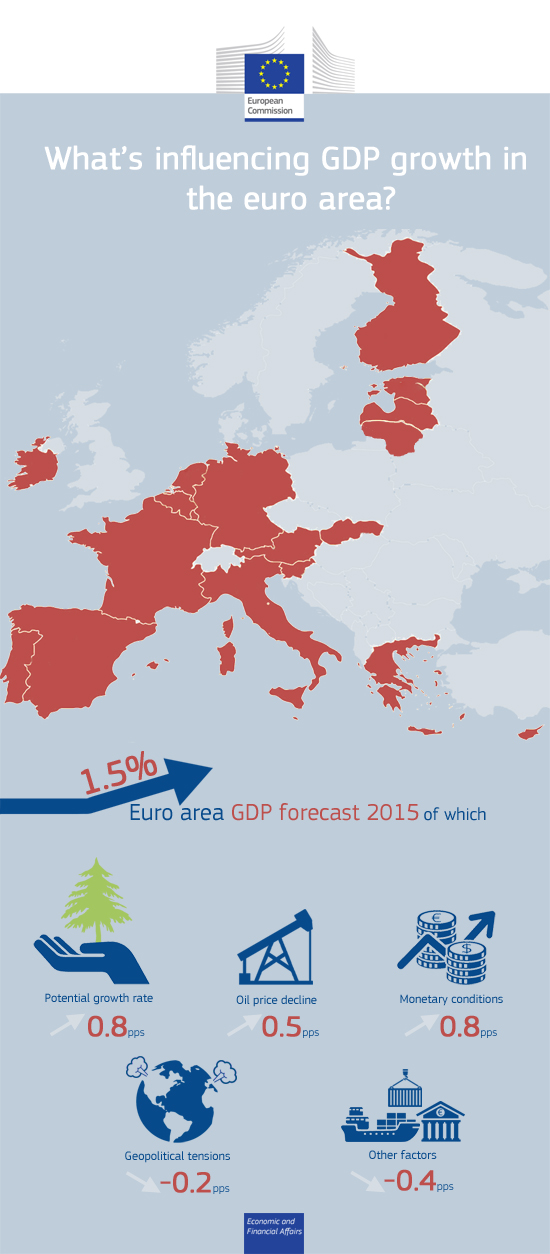

Accessibility tools
Service tools
Language
Navigation path
The economy of the euro area is forecast to grow by 1.5% in 2015. This is thanks in part to the boost it is receiving from a number of factors such as lower oil prices, the euro's exchange rate, and monetary policy conditions.

Oil prices have fallen by around 30% in euro terms since June last year. By leaving consumers with more money in their wallets and lowering costs for businesses, the fall in oil prices is expected to spur an increase in GDP growth of about half a percentage point this year.
At the same time, looser monetary conditions, including the low interest rates set by the ECB and its large scale financial asset purchases (quantitative easing), as well as expected tightening in the US, have all helped to lower the euro’s exchange rate and ease financial market conditions. Together, these factors are expected to boost GDP growth by about 0.8 percentage points.
The euro area's potential rate of growth (also known as its `natural growth' rate), meanwhile, is expected to rise to 0.8%, while the cyclical recovery is also expected to gather steam.
But a number of factors are weighing on the economy of the euro area, slowing growth. Many individuals, companies and governments still have to deal with high levels of debt and there is considerable uncertainty. These factors may reduce GDP growth by up to 0.4 percentage points, while geopolitical tensions and their effects on trade, particularly with Russia, are expected to lower the euro area’s economic growth rate by around 0.2 percentage points.
The graph below, which draws on the European Commission’s spring forecast![]()
![]() , illustrates the estimated impact of these factors on the euro area’s GDP growth forecast for 2015.
, illustrates the estimated impact of these factors on the euro area’s GDP growth forecast for 2015.
Additional tools